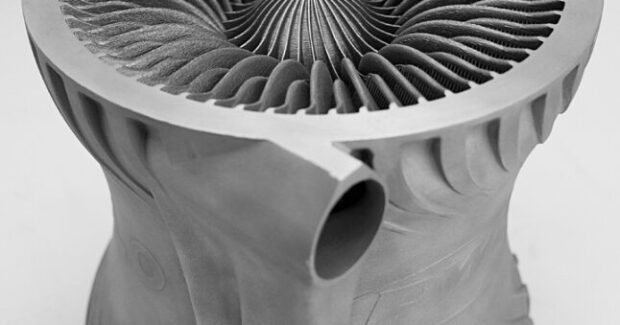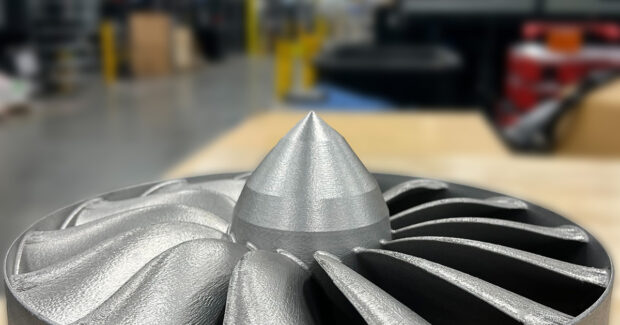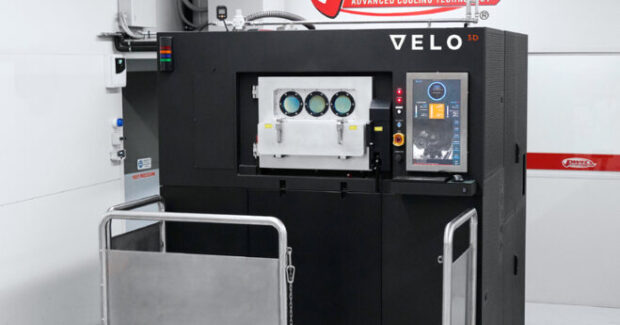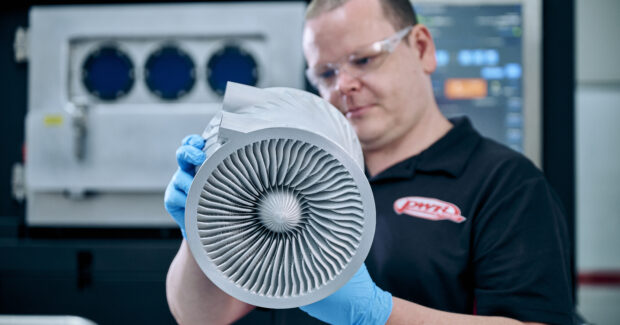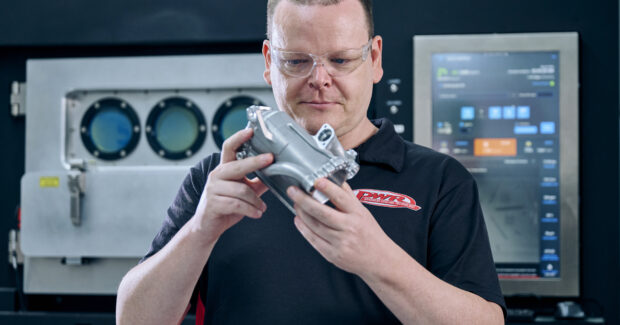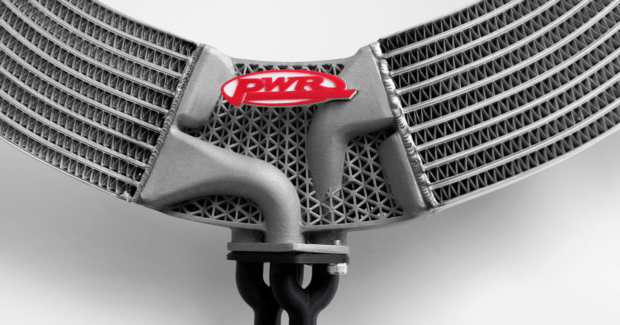Why Are Manufacturers Switching to a new Aluminum Alloy for Additive Manufacturing?
Many industries, including motorsports, aerospace, defense, and semiconductors, are replacing aluminum–magnesium-silicon alloys, such as F357 and AlSi10Mg, with Aheadd® CP1 for a number of compelling reasons.
Posted: November 12, 2024

With weight-reduction being a priority for industries such as motorsports and aerospace, many manufacturers have recently turned to the lightweight aluminum-silicon-magnesium based alloys, such as F357 and AlSi10Mg, when 3D printing parts for everything from race cars to rockets.
Depending on the application, it’s true that more-expensive titanium alloys can have a better strength-to-weight ratio than aluminum ones, and copper alloys can provide better heat-transfer coefficients. Magnesium alloys may support lower densities and higher galvanic potential. But when looking to optimize the cost, performance and manufacturability of additively manufactured (AM) parts, aluminum alloys can deliver all three goals very efficiently.
Aluminum–magnesium alloys were adapted for AM by tweaking existing materials that have been used in conventional casting for years. And we’ve seen a wide range of successful 3D-printed parts in these alloys performing well across multiple industries.
However, just in the last year or so, a new aluminum alloy — Aheadd CP1 — has leapt over aluminum-silicon-magnesium alloys in adoption by many AM users. CP1 is an aluminum-zirconium-iron alloy that was specifically designed for metal laser powder bed fusion (LPBF) printers by leading global aluminum products and solutions provider Constellium. The development of CP1 has been greeted with noticeable enthusiasm: many manufacturers that have been printing aluminum with one of Velo3D’s AM systems have switched to CP1.
What’s the Attraction? A number of Interesting Answers
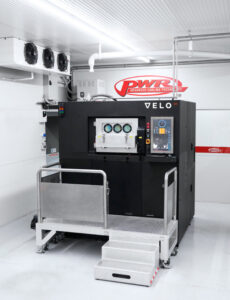
Because CP1 was created from scratch, tailored, and engineered with the specific rigors of the AM process in mind, it avoids some of the challenges manufacturers have had to overcome when using other aluminum alloys.
While aluminium is the common denominator, CP1 contains zirconium and iron, whereas F357, AlSi10Mg, and similar alloys contain silicon and magnesium. Due to the high solidus temperature and the absence of magnesium (which makes it better for brazing), and lack of silicon (which can cause porosity when welding), CP1 is evolving as the alloy of choice for applications that need to be brazed or welded with conventional materials.
Another benefit of CP1: After printing parts with F357, manufacturers must thermally treat them using three separate steps that involve solution treatment, quenching and aging. While other aluminum-silicon-magnesium alloys, including AlSi10Mg, are easier to heat treat, their other material properties, including strength, corrosion resistance, and ability to anodize do not fit the needs of many applications. CP1 parts, on the other hand, need only a single, four-hour, lower-temperature-treatment process that provides significant time and cost savings and avoids the thermal distortion that can occur when treating at higher temperatures. In addition to the inherent corrosion resistance properties, CP1 exhibits stable microstructure up to 300°C, enabling finished parts to better maintain their properties in valuable high-temperature applications such as heat exchangers.
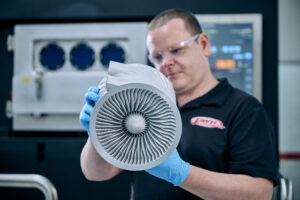
Because CP1 material is isotropic, Constellium has demonstrated that parts made from it have the same mechanical characteristics regardless of how their geometries are oriented on the build plate. This simplifies setup time and frees the AM engineer to optimize for other desired properties such as surface roughness or performance.
An important side-benefit of the composition of CP1 is that its one-step heat treatment precipitates the zirconium and iron phases, leading to an almost-pure aluminum matrix that provides high electrical and thermal conductivity. Tests are showing conductivity-performance metrics that are equal or surpass some of those for more-expensive, non-aluminum alloys. (The thermal conductivity of CP1 when heat treated is 187 W/mK; F357 standard value is about 150 W/mK, and standard AM titanium alloy Ti6Al4V is around 6.7 W/mK.)
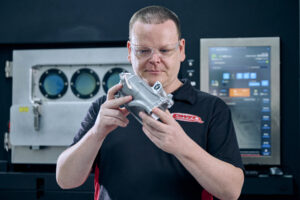
No wonder CP1 has already been qualified for use in several different AM systems, and is being considered by others, for applications in the semiconductor and general industry sectors in addition to motorsports and aerospace. Powder-production scalability and overall lower cost of ingredients add to the savings equation.
An Early-adopter’s Experience with CP1
PWR is a global provider of cooling-system technology (primarily radiators and heat exchangers) for high-performance motorsport applications. They work closely with Formula 1, NASCAR, and other racing-related entities, and have more recently expanded to serve the electronics, military, and aerospace industries.
“It became increasingly apparent that additive was showing potential for the manufacture of heat exchangers,” said Toby Maconachie, additive manufacturing engineer for PWR. “While we provide a wide range of traditional manufacturing processes and capabilities, we definitely wanted to be early adopters of AM—and in fact we were the first to adopt a Velo3D AM system for printing aluminum. Being able to combine the traditional and the additive technologies is a competitive market position that we are looking to exploit as much as possible.”

As they developed their AM capabilities, PWR discovered that, for the finest internal configurations of the most advanced heat exchangers, traditional thin-foil techniques were still superior to 3D-printed ones in terms of the minimum feature size that could be achieved. But for other applications, such as fluid distribution in cooling systems, additive was superior for complex geometries and convoluted interior structures.
The New Alloy’s Material Properties Prove Their Worth
“Most of our successes have been with assemblies where one or more components within them will be additive,” Maconachie said. This provided the impetus for PWR to switch from F357 to CP1, allowing them to braze and quickly heat-treat those combined assemblies.
What’s more, as PWR often finishes its products with hard anodizing or chemical etching, they’d been having issues with F357 producing too much “smut” during processing. “One of the things we first tested when we got CP1 samples from Constellium was what surface treatments we could do on it,” Maconachie said. “With CP1 we found that basically everything works just as well as it would for a conventional component, making it easier to anodize and etch as needed.”
Thicker Layers Lower Costs
CP1’s stability allows for thick-layer powder deposition; for those applications where it’s desirable, manufacturers are finding that going from 50-micron layers up to 100-micron ones reduces total print time by as much as 60%. This also uses less electrical energy and reduces argon-gas consumption per build.
“This attribute of CP1 is a real game-changer,” Maconachie said. “The throughput of AM machines and consequential cost of production has been a major inhibitor for customer adoption of additive solutions in the past. But with the significant reduction in print time achieved by going to 100-micron layers we’ve been able to unlock new opportunities.”
Making the Switch
Changing both of their existing AM systems to CP1 one was an easy switch, Maconachie said. “We worked closely with Velo3D on qualifying the material for production and now CP1 is all that we print these days.”
The new alloy is opening doors to further product innovation at PWR, Maconachie noted. “With the upcoming 2026 changes to the Formula 1 rules, in which weight restrictions will balance differently to thermal performance, additive could potentially compete in terms of weight and cost. We are currently working with teams on fully integrated AM heat exchangers.”
The road ahead is clear: FIA, the governing body over Formula 1 and other global motorsports, has approved the Aheadd CP1 alloy for use in Formula 1 cars for the 2024 season.





